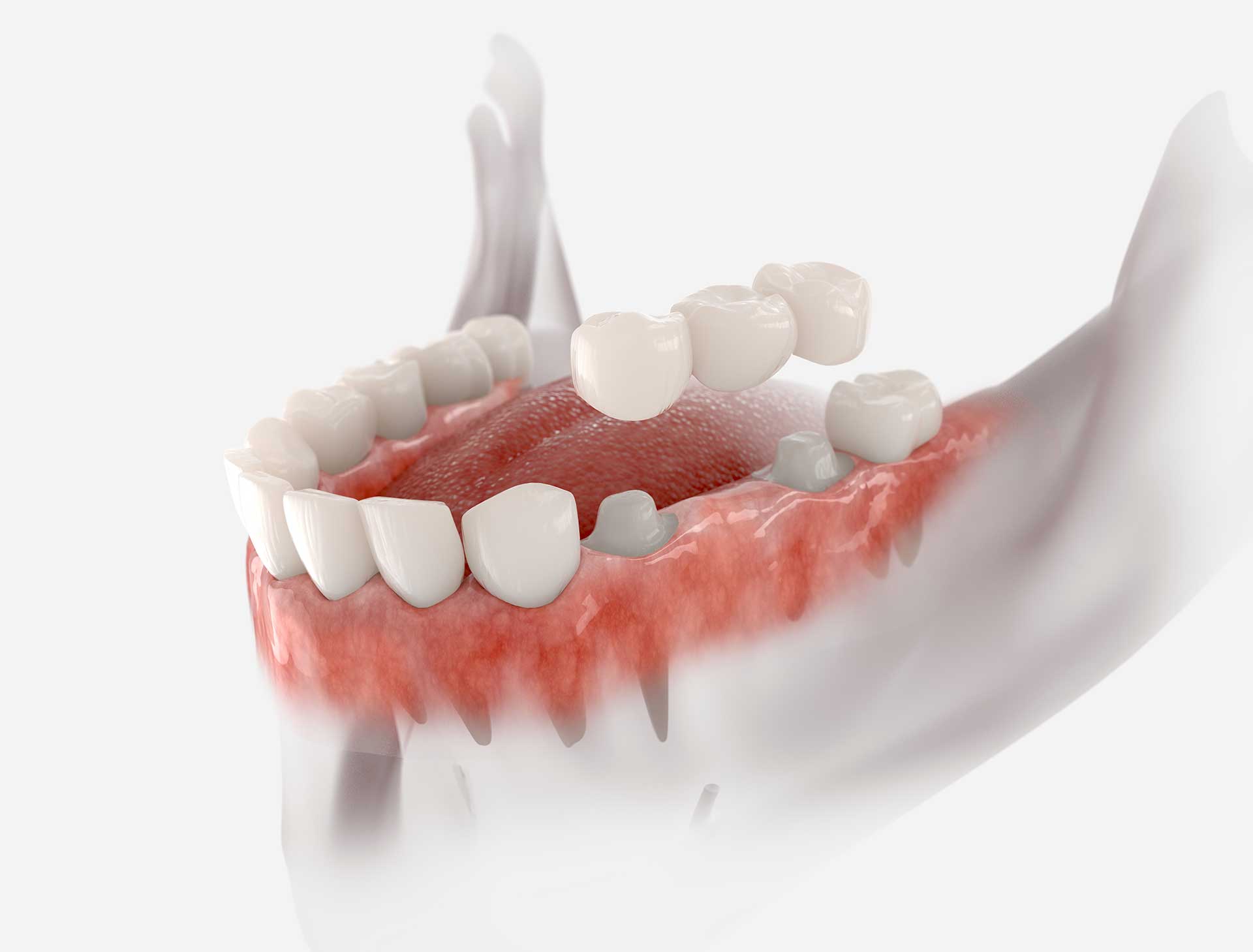Implantology
At Vinci Clinic, dental implants are becoming increasingly common as a method of restoring missing teeth – this near-perfect method provides virtually lifelong effectiveness. With the support of technology for digital smile design, implantology brilliantly combines high demands for esthetics with proper function.
Dental implants
Unrestored missing teeth can cause pain, difficulty digesting food, and malocclusion due to shifting teeth. In addition, extensive tooth loss adversely changes the facial features, for example, it causes gum and bone atrophy, as a consequence of which the facial skin loses its natural support and becomes flabby. The best way to get rid of this type of trouble is to restore missing teeth. This can be done with conventional dental restorations or with the use of implants. However, it’s worth emphasizing at this point that titanium implants are much better than prosthetic bridges or fixed and removable dentures.
Stable, functional, durable
Implants are an excellent alternative for lost teeth – they replace the root of a tooth because they are permanently placed in the maxilla or the mandible. Unlike removable dentures, implants are also more stable, improve oral hygiene, make eating easier, and provide better pronunciation. Furthermore, there is no need to grind adjacent teeth when implants are being placed.
Structure of a dental implant
Dental implants are most often made of titanium – a material that is highly biocompatible on the one hand and durable and resistant to corrosion on the other. An implant resembles a small screw, and its shape is more or less similar to the shape of a tooth root. Currently, one-piece and two-piece implants are used in implantology. A one-piece implant consists of a screw that extends above the gum line when inserted into the jawbone. The dentist places a crown or another prosthetic restoration directly onto the protruding part. A two-piece implant, on the other hand, consists of an intraosseous part (known as proper implant), a screw-retained abutment, and a crown attached to the abutment.
Stable, functional, durable
Implants are an excellent alternative for lost teeth – they replace the root of a tooth because they are permanently placed in the maxilla or the mandible. Unlike removable dentures, implants are also more stable, improve oral hygiene, make eating easier, and provide better pronunciation. Furthermore, there is no need to grind adjacent teeth when implants are being placed.
Contraindications to implantation
Implants are tolerated without major problems in more than 92% of patients treated with this method, but a small percentage of patients cannot benefit from the implantation procedure. Contraindications may include, for example, general health and age of the patient or belonging to a high-risk group (people who suffer from alcoholism, drug addiction, nicotine addiction). Dental contraindications, such as inadequate bone size and condition, may also prevent an implant treatment.
Absolute contraindications to tooth implantation
Some factors prevent the procedure from taking place. These include serious systemic conditions such as hematologic disorders, severe unstable diabetes, AIDS, cancer, hypertension, osteoporosis, and severe mental illness. Many dentists also decline to perform implantation if the patient has been diagnosed with allergies, rheumatic disorders, or severe kidney or liver disease. However, implant treatment is precluded not only by systemic diseases. Sometimes, poor oral hygiene (combined with a lack of proper hygiene habits without a chance for any improvement) is also a factor that disqualifies the patient.
Relative contraindications to tooth implantation
Relative contraindications include all those factors which do not rule out the possibility of performing the procedure, however, still pose a high risk of complications. In the case of relative contraindications, the dentist makes the decision on a case-by-case basis. Relative contraindications include:
- jawbone atrophy (prior bone reconstruction required)
- pregnancy
- diabetes that can be stabilized
- gingival periodontal disease, occlusal disorders
- bone atrophy of the maxilla and mandible
- patient’s age (below the age of 16)

